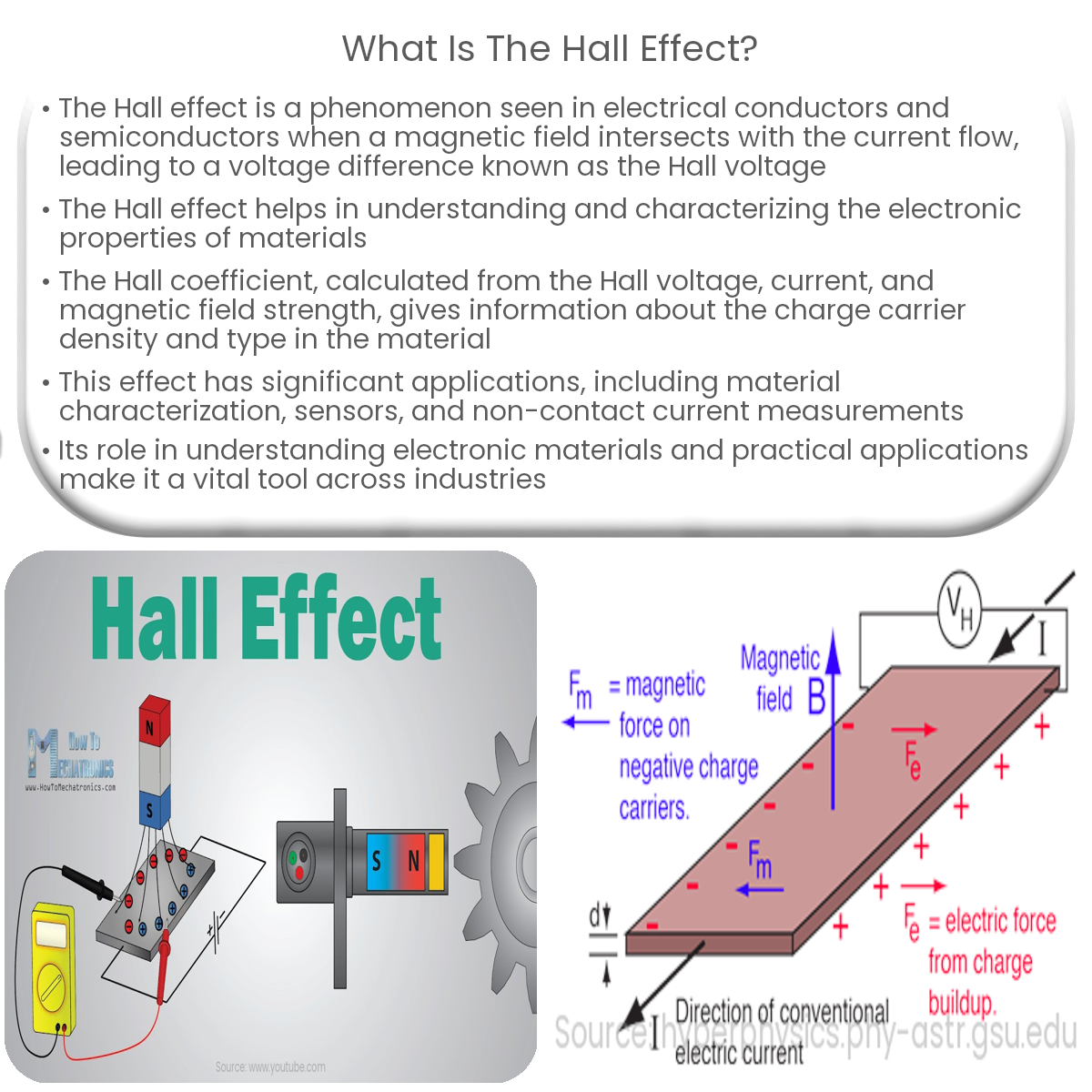The Hall effect occurs when a magnetic field applied perpendicular to an electric current creates a voltage across a conductor.
The Hall Effect: A Fundamental Principle in Physics
The Hall effect is a phenomenon in which an electric potential, known as the Hall voltage, is generated across a conductor when a magnetic field is applied perpendicular to the direction of the electric current. Discovered by Edwin Hall in 1879, the Hall effect has become a crucial principle in the study of electromagnetism and the behavior of charged particles in magnetic fields.
Understanding the Hall Effect
When a current-carrying conductor is placed in a magnetic field, the magnetic field exerts a force on the moving charged particles. This force, called the Lorentz force, causes the charged particles to be deflected to one side of the conductor. As a result, an accumulation of charges occurs on one side, while the opposite side is depleted of charges. This separation of charges establishes an electric field within the conductor, which in turn generates a voltage difference known as the Hall voltage.
The Hall effect can be observed in both positively and negatively charged particles, and its magnitude depends on several factors such as the strength of the magnetic field, the current through the conductor, and the properties of the conducting material.
Applications of the Hall Effect
The Hall effect has a wide range of applications in various fields, including:
- Magnetic Field Sensing: Hall effect sensors are used to measure the strength and direction of magnetic fields, as the Hall voltage is directly proportional to the magnetic field strength. These sensors are commonly used in automotive, aerospace, and industrial applications.
- Current Measurement: By placing a Hall effect sensor close to a current-carrying conductor, the magnetic field generated by the current can be measured, and the current can be calculated. This method allows for non-invasive current measurements in electronic devices and power systems.
- Material Characterization: The Hall effect can be used to determine the type and density of charge carriers in a material, providing valuable information about its electrical properties.
- Quantum Hall Effect: In two-dimensional electron systems at very low temperatures and strong magnetic fields, the Hall effect exhibits quantized behavior. This phenomenon, known as the quantum Hall effect, has led to the development of precise resistance standards and has been used to study new states of matter.
In conclusion, the Hall effect is a fundamental phenomenon in electromagnetism that has far-reaching applications in various fields. Its ability to measure magnetic fields and currents, as well as characterize materials, makes it an indispensable tool for scientists and engineers.


